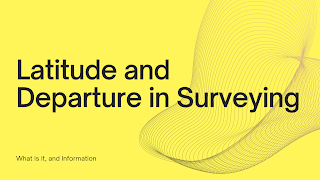Principles of Plane Table Surveying
In this article, we will see more details about Principles of Plane Table surveying.
Let's see,
What is Plane Table Surveying and what are its principles?
Principles of Plane Table Surveying are based on direct plotting of the field observations on a drawing sheet fixed on a plane table.
The key principles are:
1. Parallelism:
The edge of the alidade (or the line of sight) must be kept parallel to the line drawn on the paper while sighting an object. This ensures accurate orientation.
2. Centering:
The point on the paper representing a ground station (like station A) should be exactly over the actual position of that station on the ground. This is done using a plumbing fork or plumb bob.
3. Orientation:
The table must be oriented (i.e., rotated) such that the lines on the paper are parallel to the corresponding lines on the ground. This can be done by:
- Backsighting (most accurate)
- Using compass (less accurate)
4. Radiation:
If the table is set over a single point, the positions of other objects are located by drawing rays (lines) from the station point and measuring distances (scaled) along those rays.
5. Intersection:
The position of an object is determined by sighting it from two known stations. The intersection of the rays gives the position on the map.
6. Traversing:
Plane table can be used for traversing by setting the table at successive stations, orienting it properly, and plotting the lines and features.
7. Resection:
Determining the location of the instrument station on the map by sighting known points whose positions are already plotted.









Comments
Post a Comment